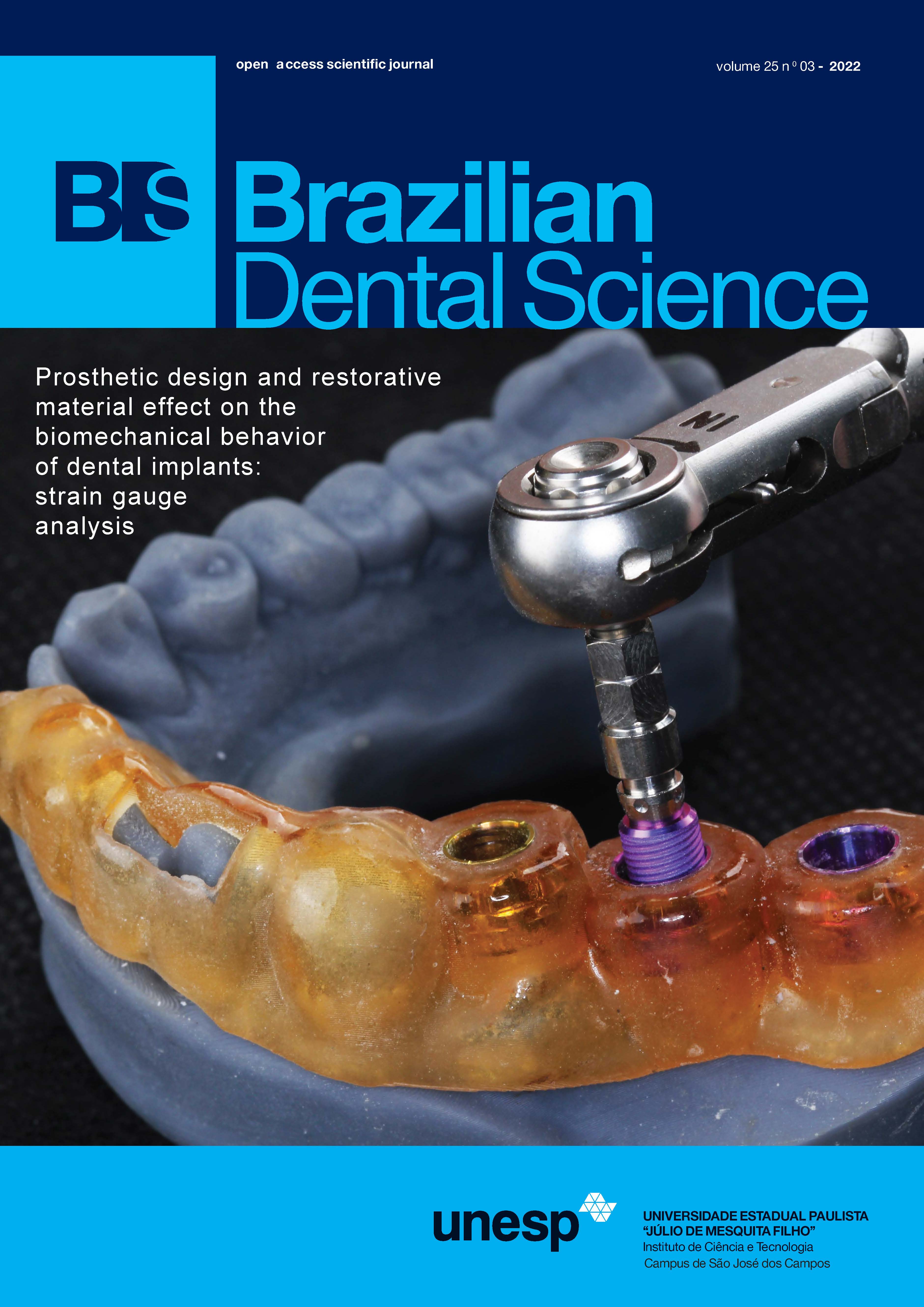Cone-beam computed tomographic evaluation of dimensional hard tissue changes following alveolar ridge preservation with leucocyte and platelet-rich fibrin techniques: a pilot study
DOI:
https://doi.org/10.4322/bds.2022.e3535Abstract
Objective: This study evaluated the effect of leucocyte and platelet-rich fibrin (L-PRF) techniques used in alveolar
ridge preservation on dimensional hard tissue changes of the alveolar ridge assessed using cone-beam computed
tomography (CBCT) scans. Material and Methods: Elective alveolar ridge preservation surgeries were performed
on seven systemically healthy patients who underwent single posterior tooth extraction. Patients were randomly
treated with PRF mixed with a commercial bone xenograft (n = 3) or PRF plug (n = 4). CBCT scans were
taken immediately after tooth extraction and then four months later, just before implant surgery. Dimensional
alterations in socket height (SH), socket area (SA) and socket volume (SV) were evaluated on CBCT scans by
percentage differences before and after treatments. Results: Sockets treated with PRF plus bone xenograft had a
tendency to maintain alveolar bone dimensions over time (SH= 11.22% to 82.74%, SA= 1.84% to 48.91% and
SV= 9.11% to 203.62%), while sockets treated only with PRF plug technique presented only a modest increase
in height (SH= 1.47% to 11.11%) but greater alveolar ridge resorption confirmed by a decrease in socket area
and volume dimensions (SA= 0.21% to -24.09% SV= 8.53% to -54.12%). Conclusion: Within the limitations
of this study, the maintenance of alveolar socket dimensions was observed when PRF was associated with a
xenograft. However, the loss of alveolar ridge dimensions was not entirely prevented by PRF treatment alone.
KEYWORDS
Alveolar bone loss; Bone substitutes; Cone-beam computed tomography; Platelet-rich fibrin; Tooth socket.
Downloads
Downloads
Published
How to Cite
Issue
Section
License
Brazilian Dental Science uses the Creative Commons (CC-BY 4.0) license, thus preserving the integrity of articles in an open access environment. The journal allows the author to retain publishing rights without restrictions.
=================




























